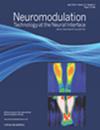骶神经调节治疗神经源性膀胱或肠功能障碍的疗效和安全性荟萃分析。
IF 3.2
3区 医学
Q2 CLINICAL NEUROLOGY
引用次数: 0
摘要
背景:本研究的目的是评价骶神经调节(SNM)治疗神经源性膀胱(NB)和神经源性肠功能障碍(NBD)的有效性和安全性。材料与方法:截至2024年8月,系统检索PubMed和Web of Science的文献,重点检索SNM治疗NB或NBD的相关研究。评估研究质量后,使用Review Manager 5.3 (Cochrane Collaboration, Oxford, UK)提取数据并进行分析。结果:共纳入15项研究,573例患者。在SNM治疗后,患者在关键结局指标上有显著改善,包括每24小时排尿次数(加权平均差[WMD] -4.08;95% ci -6.80, -1.35;p = 0.003),单次排尿量(WMD为123.60;95% ci 93.17, 154.03;p < 0.001),每24小时渗漏次数(WMD -4.27;95% ci -5.79, -2.74;p < 0.001),夜尿数(WMD -2.48;95% ci -2.62, -2.35;p < 0.001),每24小时清洁间歇自我导尿(WMD -2.35;95% ci -2.98, -1.71;p < 0.001),膀胱顺应性(WMD 9.09;95% ci 2.31, 15.87;p = 0.009),储存期最大逼尿肌压力(WMD -14.76;95% ci -18.63, -10.88;p < 0.001),最大尿流率(WMD 6.50;95% ci 4.21, 8.80;p < 0.001),最大膀胱容量(WMD 66.28;95% ci 2.83, 129.73;p = 0.04), Wexner评分(WMD -9.98;95% ci -13.65, -6.31;p < 0.001), NBD评分(WMD -6.31;95% ci -6.89, -5.73;P < 0.001)。结论:SNM治疗NB或NBD有效、安全。本文章由计算机程序翻译,如有差异,请以英文原文为准。
A Meta-Analysis on the Efficacy and Safety of Sacral Neuromodulation for Neurogenic Bladder or Bowel Dysfunction
Background
The aim of this work was to evaluate the efficacy and safety of sacral neuromodulation (SNM) in the treatment of neurogenic bladder (NB) and neurogenic bowel dysfunction (NBD).
Materials and Methods
A systematic literature search was conducted using PubMed and Web of Science up to August 2024, focusing on studies related to SNM treatment for NB or NBD. After assessing the quality of the studies, data were extracted and analyzed using Review Manager 5.3 (Cochrane Collaboration, Oxford, UK).
Results
A total of 15 studies involving 573 patients were included. After SNM treatment, the patients showed significant improvements in key outcome measures, including voiding frequency per 24 hours (weighted mean difference [WMD] −4.08; 95% CI −6.80, −1.35; p = 0.003), single voiding volume (WMD 123.60; 95% CI 93.17, 154.03; p < 0.001), number of leakage episodes per 24 hours (WMD −4.27; 95% CI −5.79, −2.74; p < 0.001), number of nocturia (WMD −2.48; 95% CI −2.62, −2.35; p < 0.001), clean intermittent self-catheterization per 24 hours (WMD −2.35; 95% CI −2.98, −1.71; p < 0.001), bladder compliance (WMD 9.09; 95% CI 2.31, 15.87; p = 0.009), maximum detrusor pressure during storage phase (WMD −14.76; 95% CI −18.63, −10.88; p < 0.001), maximum urine flow rate (WMD 6.50; 95% CI 4.21, 8.80; p < 0.001), maximum bladder capacity (WMD 66.28; 95% CI 2.83, 129.73; p = 0.04), Wexner score (WMD −9.98; 95% CI −13.65, −6.31; p < 0.001), and NBD score (WMD −6.31; 95% CI −6.89, −5.73; p < 0.001).
Conclusion
These results indicated that SNM was effective and safe in treating NB or NBD.
求助全文
通过发布文献求助,成功后即可免费获取论文全文。
去求助
来源期刊

Neuromodulation
医学-临床神经学
CiteScore
6.40
自引率
3.60%
发文量
978
审稿时长
54 days
期刊介绍:
Neuromodulation: Technology at the Neural Interface is the preeminent journal in the area of neuromodulation, providing our readership with the state of the art clinical, translational, and basic science research in the field. For clinicians, engineers, scientists and members of the biotechnology industry alike, Neuromodulation provides timely and rigorously peer-reviewed articles on the technology, science, and clinical application of devices that interface with the nervous system to treat disease and improve function.
 求助内容:
求助内容: 应助结果提醒方式:
应助结果提醒方式:


